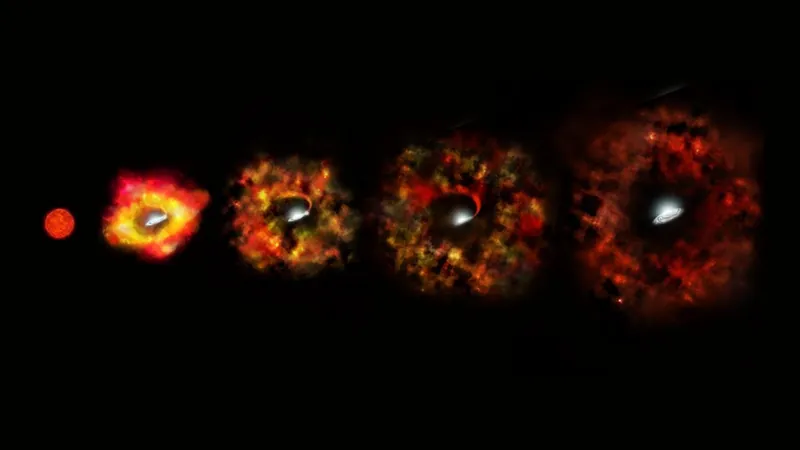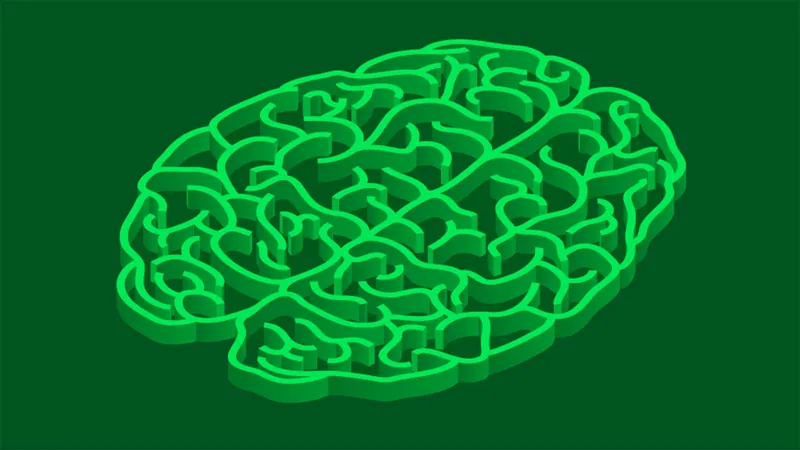
The Shocking Disappearance of a Star in Andromeda: Birth of a Black Hole?
2024-11-11
Author: Ming
Introduction
In a groundbreaking discovery, astronomers have identified a massive star in the Andromeda galaxy that mysteriously transformed into a black hole without undergoing the typical supernova explosion. This astonishing event challenges our understanding of stellar evolution and the mechanics behind supernovae.
Massive Stars and Supernova Explosions
Massive stars, specifically those approximately eight times the mass of our Sun, generally culminate their life cycles in spectacular supernova explosions. These cataclysmic events can momentarily outshine entire galaxies, creating neutron stars or black holes from the remnants. But the recent findings regarding the star, designated M31-2014-DS1, suggest that some stars may skip this explosive phase entirely, leading directly to black hole formation.
The Collapse Process
Typically, stars are in a delicate equilibrium between the outward pressure generated by nuclear fusion and the inward gravitational force seeking to pull them apart. As these massive stars exhaust their core hydrogen, their fusion slows down, tipping the balance and leading to a collapse that usually results in a supernova. But evidence has emerged indicating that for some stars, including M31-2014-DS1, this process may not always lead to the expected detonation.
Observations of M31-2014-DS1
The research, led by Kishalay De at MIT's Kavli Institute, highlights the unique characteristics of M31-2014-DS1. Observations began in 2014 when astronomers detected an increase in its brightness, which remained constant for nearly three years before inexplicably fading. By 2023, deep imaging techniques failed to detect the star entirely, raising questions about its fate.
Mass Loss and Dust Shells
According to the study, M31-2014-DS1 was originally massive—up to 20 times the mass of the Sun—but during its lifetime, it shed considerable mass, ending with roughly 6.7 solar masses. Surrounding the star are remnants of a dust shell, typically observed after a supernova event, yet no explosive light or energy release was found to substantiate such an event. This contradiction led researchers to conclude that a "failed" supernova scenario had unfolded, where the star's core collapsed without producing the anticipated flash of light.
The Mystery of Failure to Explode
The crucial question remains: why did this massive star fail to explode? Supernova events involve complex interactions, including a process known as neutronization, where protons combine with electrons to form neutrons, generating a burst of neutrinos. These neutrinos can interact with surrounding stellar material, potentially creating shock waves that may lead to an explosion. In the case of M31-2014-DS1, however, the expected neutrino shock failed to propagate, resulting in a direct collapse into a black hole instead.
Significance of the Findings
Researchers estimate that an astounding 98% of the star's mass collapsed into what is believed to be a black hole of about 6.5 solar masses, a staggering revelation that has significant implications for our understanding of stellar death. These findings also highlight that M31-2014-DS1 is not alone; several potential "failed supernovae" candidates have been documented, including one found in the Fireworks Galaxy (NGC 6946) in 2009, further deepening the mystery surrounding these elusive astronomical phenomena.
Conclusion
As we delve deeper into this enigma, the implications extend beyond mere curiosity. These discoveries could reshape our knowledge of cosmic evolution, the lifecycle of stars, and the formation of black holes. The universe continues to surprise us, and each revelation about these massive celestial bodies could unlock new secrets about the cosmos itself. Keep your eyes on the skies—who knows what we may uncover next?

 Brasil (PT)
Brasil (PT)
 Canada (EN)
Canada (EN)
 Chile (ES)
Chile (ES)
 España (ES)
España (ES)
 France (FR)
France (FR)
 Hong Kong (EN)
Hong Kong (EN)
 Italia (IT)
Italia (IT)
 日本 (JA)
日本 (JA)
 Magyarország (HU)
Magyarország (HU)
 Norge (NO)
Norge (NO)
 Polska (PL)
Polska (PL)
 Schweiz (DE)
Schweiz (DE)
 Singapore (EN)
Singapore (EN)
 Sverige (SV)
Sverige (SV)
 Suomi (FI)
Suomi (FI)
 Türkiye (TR)
Türkiye (TR)